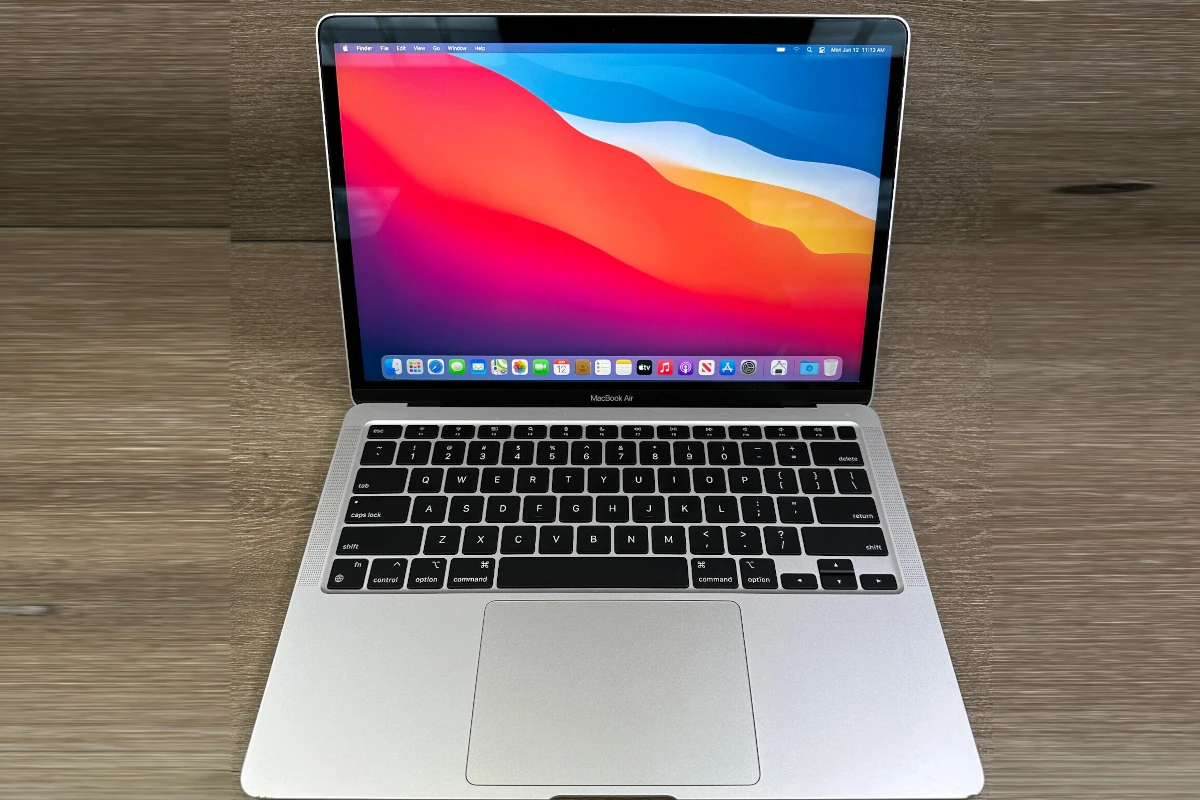Apple has stopped selling the M1 MacBook Air, which was released in 2020 as one of Apple’s first Macs with its own chips. This laptop is no longer available for purchase from Apple’s website or stores. This signifies a new chapter in the company’s silicone technology evolution. The newer M2 and M3 MacBook Air models promise even greater performance, efficiency, and innovation, further solidifying Apple’s position in the personal computing industry.
The M1 MacBook Air, known for its thin shape and long battery life, has been replaced by newer models with updated designs and faster chips. Some stores may still have remaining stock of the M1 MacBook Air, but Apple is encouraging customers to consider its latest laptops. The company often stops selling older models when new ones come out.

Farewell to the Pioneer: Apple’s M1 MacBook Air Bids Adieu
End of an Era for a Trailblazer
In a move signaling the rapid advancement of its silicon technology, Apple has officially discontinued the M1 MacBook Air. This model, launched in November 2020, marked a significant turning point as one of the first Macs to transition from Intel processors to Apple’s own custom-designed chips. The M1 MacBook Air quickly garnered acclaim for its exceptional performance, battery life, and value, solidifying Apple’s position as a leader in chip design.
Paving the Way for Newer Generations
The discontinuation of the M1 MacBook Air follows the introduction of the M2 and M3 MacBook Air models, which boast even greater performance and efficiency. The M2 chip brought enhancements in speed and graphics capabilities, while the M3 chip further pushed the boundaries with its advanced architecture. The retirement of the M1 model reflects Apple’s commitment to continuous innovation and its focus on delivering cutting-edge technology to its customers.
Legacy of the M1 MacBook Air
Despite its discontinuation, the M1 MacBook Air leaves behind a lasting legacy. It proved the viability of Apple’s silicon strategy and set a new standard for performance and energy efficiency in laptops. The M1 chip’s success paved the way for subsequent generations of Apple silicon, including the M1 Pro, M1 Max, M1 Ultra, M2 Pro, M2 Max, and M3, which power a wide range of Apple devices. The M1 MacBook Air’s impact will continue to be felt as Apple silicon continues to evolve and redefine what’s possible in computing.

Transitioning to Newer Models
For those considering purchasing a MacBook Air, the M2 and M3 models offer compelling options. They build upon the foundation laid by the M1, delivering enhanced performance, improved battery life, and refined designs. Apple’s ongoing software updates ensure that even older models like the M1 MacBook Air continue to receive support and remain viable for years to come. However, for those seeking the latest advancements in Apple silicon technology, the newer models are the way to go.
| Model | Chip | Key Features | Starting Price (USD) |
|---|---|---|---|
| MacBook Air (13-inch, 2020) | M1 | Exceptional performance, long battery life, fanless design | Discontinued |
| MacBook Air (13-inch, 2022) | M2 | Faster performance, improved graphics, redesigned chassis | $1,199 |
| MacBook Air (15-inch, 2023) | M2 | Larger display, same performance as 13-inch M2 model | $1,299 |
| MacBook Air (13-inch, 2024) | M3 | Enhanced performance, improved efficiency, new features | $1,099 |
| MacBook Air (15-inch, 2024) | M3 | Larger display, same performance as 13-inch M3 model | $1,299 |
Key Takeaways
- Apple has ended sales of the M1 MacBook Air
- The M1 Air was one of the first Macs with Apple’s own chips
- Newer MacBook Air models are now available with updated features
The Evolution of the MacBook Air
The MacBook Air has changed a lot since it first came out. It’s gotten thinner, faster, and more powerful over time.
From Inception to the M1 Chip
Steve Jobs showed off the first MacBook Air in 2008. He pulled it out of a thin envelope to show how small it was. The Air was very thin and light compared to other laptops at the time. It had a wedge shape that made it easy to slip into bags.
Over the years, Apple kept making the Air thinner and faster. They added better screens and longer battery life. In 2020, Apple released a big update – the M1 MacBook Air. This version used Apple’s own M1 chip instead of an Intel processor. The M1 chip made the Air much faster and gave it amazing battery life.

Transition to Apple Silicon
The M1 chip marked a big change for the MacBook Air. It was Apple’s first laptop to use their own silicon. The M1 Air was super fast and could run for up to 18 hours on a charge.
In 2022, Apple came out with the M2 MacBook Air. This model had a new design without the classic wedge shape. It was flat and thin all over. The M2 chip made it even faster than before.
Now in 2024, Apple has stopped selling the M1 MacBook Air. They’ve replaced it with new M2 and M3 models. These newer Airs are faster and have better screens. But some people will miss the old wedge design that made the Air famous.
Market Impact and Consumer Response
The discontinuation of the M1 MacBook Air has shaken up the laptop market. Buyers now face new choices and pricing options. Tech reviewers have weighed in on the performance of newer models.
Competitive Pricing and Configuration
Apple stopped selling the M1 MacBook Air. This left a gap in their low-cost laptop lineup. The M2 MacBook Air now starts at $1,099. This is $100 more than the old M1 model’s $999 price tag.
Some buyers may look at other brands for cheaper options. Others might spend more for the newer M2 or M3 models. These have better specs but cost more.
Apple’s move could push some customers to Windows laptops. These often have lower prices in the entry-level range.
Performance Reviews and User Experience
Tech experts have tested the newer MacBook Air models. They found improvements in speed and graphics. The M2 and M3 chips are faster than the M1.
Battery life remains strong in the newer models. This was a key selling point of the M1 Air. Users report smooth performance for everyday tasks.
The 13-inch screen size stayed the same. This keeps the Air portable and light. Keyboard and trackpad quality are still highly rated.
Some miss the wedge shape of the M1 Air. The new flat design is more modern but less unique. Fan-less design means quiet operation, which users like.
Frequently Asked Questions
The M1 MacBook Air’s discontinuation raises several key questions for consumers and tech enthusiasts. Here are answers to some common queries about this change in Apple’s product lineup.
What is the official discontinuation date for the M1 MacBook Air?
Apple stopped selling the M1 MacBook Air on March 4, 2024. This date marks the end of its availability through official Apple channels.
Has Apple stopped production of the MacBook Air M1 model?
Yes, Apple has ended production of the M1 MacBook Air. The company typically stops making older models when new versions are released.
What are the differences between the MacBook Air M1 and M2 models?
The M2 MacBook Air has a newer chip, updated design, and better display. It’s thinner and lighter than the M1 model. The M2 version also has a better webcam and more ports.
Will Apple continue to provide support for the M1 MacBook Air after its discontinuation?
Apple will keep supporting the M1 MacBook Air with software updates and repairs. This support usually lasts for several years after a product is discontinued.
How does the MacBook Air M1 compare to the M1 MacBook Pro in terms of performance?
The M1 MacBook Air and M1 MacBook Pro have similar speeds for most tasks. The Pro has a fan for better cooling, which helps with long, intense work. The Pro also has a Touch Bar and slightly better battery life.
What are the implications for consumers owning an M1 MacBook Air now that it has been discontinued?
M1 MacBook Air owners can still use their laptops as normal. The discontinuation doesn’t affect the device’s function. Owners may see fewer new accessories made for this model. The laptop’s resale value might drop faster now that it’s no longer sold new.







